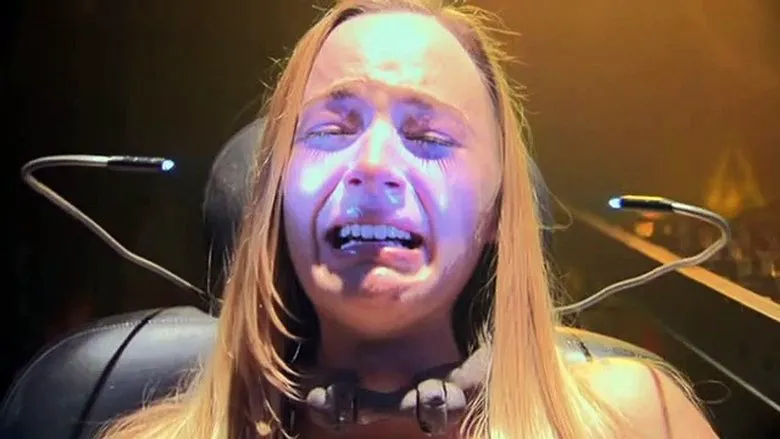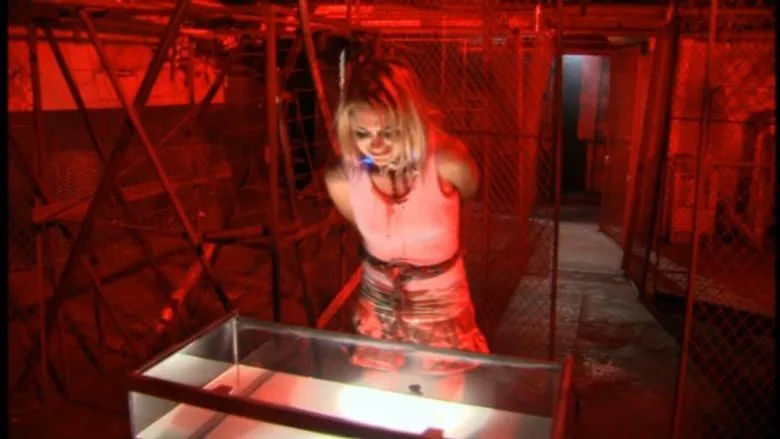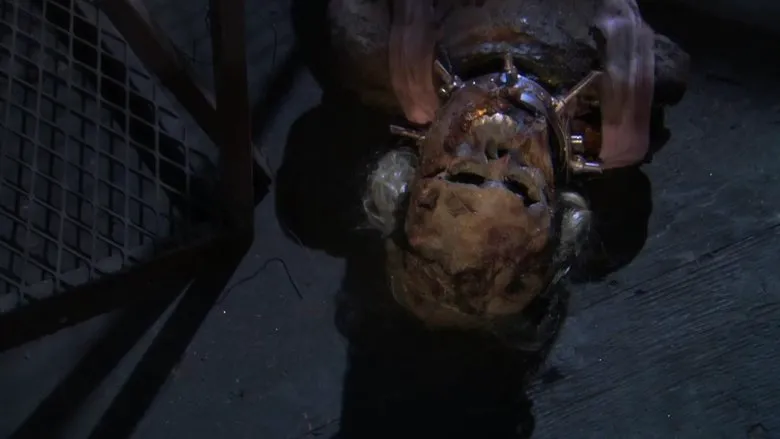Unveiling the Terror: The Making of “Are You Scared?”
The horror genre continuously seeks new ways to twist the knife of fear, and “Are You Scared?” delivers a chilling exploration into the depths of psychological terror, masquerading as a high-stakes reality show. More than just a survival game, the film delves into the human psyche, exposing vulnerabilities and dark secrets under the most extreme conditions. Let’s pull back the curtain on how this unsettling cinematic experience was brought to life, transforming a seemingly simple premise into a gripping nightmare.
The Genesis of Fear: From Concept to Screenplay
The core idea behind “Are You Scared?” springs from a potent blend of familiar tropes – the “torture game” meets the voyeuristic appeal of reality television – but elevates it with a sharp focus on psychological manipulation. The filmmakers sought to move beyond mere gore, aiming for a dread that crawls under the skin and warps the mind, echoing societal anxieties about surveillance and authenticity. The concept of “The Host” orchestrating this elaborate charade rooted in the contestants’ past misdeeds provides a morally ambiguous and terrifying foundation, elevating the narrative from a simple fight for survival to a brutal reckoning.
The Labyrinthine Prison: Crafting the Abandoned Factory
A pivotal character in “Are You Scared?” is undeniably the abandoned factory itself. Far from being a mere backdrop, the factory is a living, breathing entity that shifts and confounds, designed to disorient and amplify paranoia. The production design team faced the daunting task of creating an environment that felt both incredibly real and impossibly sinister.
They meticulously curated every detail, from the rusted machinery and decaying infrastructure to the strategically placed shadows that obscure vision and hide unseen terrors. The challenge lay in making the space feel oppressive and claustrophobic, yet sprawling and maze-like, constantly denying the audience and characters a fixed sense of security. The use of practical sets, rather than relying heavily on CGI, imbued the factory with a tangible, gritty authenticity that heightens the film’s immersive quality.

Each corridor, each crumbling wall, told a story of decay and neglect, reflecting the moral rot “The Host” sought to expose in his chosen victims. The production team often employed selective lighting, casting deep, ominous shadows which played a crucial role in creating the elusive, shifting nature of the factory and emphasizing the sense of being forever lost within its confines.
The Human Element: Portraying Desperation and Betrayal
The film’s true horror emanates from its richly drawn characters, each burdened by their past, making them ripe targets for “The Host’s” machinations. Jake (the ex-con), Melissa (the introverted student), Chris (the arrogant businessman), Sarah (the ex-soldier), Emily (the fragile artist), and Matt (the awkward IT tech) represent a cross-section of society, each with a secret that ironically connects them to this nightmarish game.
https://file.filmsnest.com/movie/cover/a1b054d79943261ee35ffa0fbd0c88e5.webp
The casting choices were crucial, requiring actors capable of conveying profound psychological disintegration. The film masterfully portrays the rapid descent into paranoia, distrust, and desperation as basic human instincts for survival conflict with the crushing weight of their unique challenges and the constant threat of elimination. Early alliances crumble, and the shift from camaraderie to cutthroat competition is a harrowing display of human nature pushed to its breaking point. The nuanced performances bring a visceral reality to the terror.

Orchestrating Madness: The Role of “The Host”
Central to the film’s success is the enigmatic figure of “The Host.” This character isn’t just a faceless villain; he’s a charismatic, sadistic puppet master, whose invisible presence permeates every square inch of the factory. His power lies not in physical strength, but in his absolute control over the psychological landscape, exploiting the contestants’ deepest fears and past traumas.
The decision to keep “The Host” largely unseen for much of the film, only revealing snippets of his calculated madness, amplifies his mystique and terror. He becomes an omnipresent force, a puppeteer whose strings are the contestants’ psychological weaknesses. This masterful use of an unseen antagonist intensifies the psychological horror, as the characters’ greatest torments often spring from within themselves, exacerbated by “The Host’s” elaborate, personalized challenges.
The Cinematography of Claustrophobia and Confusion
The directorial vision of “Are You Scared?” heavily relied on cinematic techniques to foster an intense sense of claustrophobia, disorientation, and mounting paranoia. Tight close-ups, hand-held camera work, and erratic cuts were often employed to mirror the characters’ fractured mental states and the factory’s disorienting nature.
The lighting design played an equally critical role, often leaving significant portions of the frame in darkness, forcing the audience to strain their eyes and imagine what lurks just beyond sight – a far more terrifying prospect than any visual reveal. This strategic approach to lighting and camera work immersed viewers directly into the contestants’ terrifying experience, blurring the lines not just for the characters, but for the audience as well, making them question what is real and what is part of the macabre game.
https://file.filmsnest.com/movie/cover/e246423705650976a5812551829d68f8.webp
The Heart-Pounding Climax and Its Unsettling Truth
“Are You Scared?” builds relentlessly towards its brutal climax, where the true nature of “The Host’s” game is chillingly revealed. The selection of the contestants was no accident; their dark pasts and secrets were precisely why they were chosen, transforming the ‘reality show’ into a twisted experiment in human morality and survival. This reveal isn’t just a plot twist; it’s a thematic declaration, forcing both characters and audience to confront difficult questions about guilt, redemption, and the capacity for cruelty, both from without and within.

The final confrontation isn’t merely about physical survival but a battle for psychological integrity, as the remaining contestants grapple with their personal demons and the ultimate truth of their imprisonment. Whether anyone escapes “The Host’s” deadly trap becomes secondary to whether they can escape the psychological scars of an experience designed to break them.
Legacy of Fear: Beyond the Game Show
“Are You Scared?” stands as a testament to the power of psychological horror, proving that the most terrifying monsters often reside in the human mind. Through its meticulously crafted environment, complex characters, and the unsettling presence of “The Host,” the film succeeded in delivering not just jump scares, but a profound sense of dread that lingers long after the credits roll. It’s a gripping exploration of fear, human frailty, and the terrifying consequences when secrets, past sins, and the desire for survival collide in a game from which there is almost no escape.